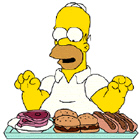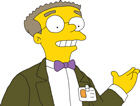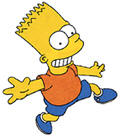Matching
|
|
|
a. | Independent
Variable | n. | Data | b. | Dependent Variable | o. | Scientific Method | c. | Line
Graph | p. | Experimental
Control | d. | Bar Graph | q. | Variable | e. | Dial-O-Gram | r. | Flow
Chart | f. | Title | s. | Independent Investigation | g. | Graduated
Cylinder | t. | Procedure | h. | Balance | u. | International System of Units | i. | Beaker | v. | Meter | j. | Triple-Beam Balance | w. | Mass | k. | Hypothesis | x. | Volume | l. | Experiment | y. | meniscus | m. | Analyze | z. | Prefix | | | | |
|
|
|
1.
|
the
amount of matter in an object.
|
|
|
2.
|
is
the version of the metric system which has been established by the international Bureau of
Weights.
|
|
|
3.
|
the
specific techniques used in conducitng a particular experiment.
|
|
|
4.
|
changes that occur in an experiment that are directly caused by the
experimenter.
|
|
|
5.
|
investigating a problem individually.
|
|
|
6.
|
not
to be confused with a scale, this device is used to measure the mass of objects not
weight.
|
|
|
7.
|
an
affix that is added in front of the word.
|
|
|
8.
|
a
cylindrical tube that measures the volume of a liquid.
|
|
|
9.
|
a
balance that is used for larger scientific objects and measures up to 2500g of mass.
|
|
|
10.
|
a
schematic step-by-step solution to a problem or process.
|
|
|
11.
|
a
balance that has a dial that measures to the nearest one hundredth of a gram. Used for objects
up to 300 grams.
|
|
|
12.
|
a
scientific container that is used to measure the volme of a liquid.
|
|
|
13.
|
used
to hold the conditions uniform or constant under which an ivestigation is carried out.
|
|
|
14.
|
a
collection of facts from which conclusions may be drawn.
|
|
|
15.
|
describes and explains the graph or chart.
|
|
|
16.
|
the
base unit of length in the metric system.
|
|
|
17.
|
the
amount of space an object takes up.
|
|
|
18.
|
the
step by step process by which scientists investigate hypotheses using experiments.
|
|
|
19.
|
changes due to the independent variable, which is typically represented on the
vertical axis.
|
|
|
20.
|
the
act of conducting a controlled test or investigation.
|
True/False
Indicate whether the sentence or statement is true
or false.
|
|
|
21.
|
It is
not important to leave your lab area clean and clutter-free.
|
|
|
22.
|
Only
wear eye protection when performing an experiment in that deals with an open flame.
|
|
|
23.
|
There
is no need to read the entire lab before you start, just read it as you go.
|
|
|
24.
|
Keep
hair and clothes loose during an experiment.
|
|
|
25.
|
Always report spills and keep glassware away from the edge of the table.
|
|
|
26.
|
Always handle glassware that has been exposed to heat with your bare
hands.
|
|
|
27.
|
Be
aware of what others are doing around you and do not point experiments towards them.
|
|
|
28.
|
Unauthorized experimentation is wonderful and encouraged.
|
|
|
29.
|
Absolutely no horseplay in the laboratory.
|
Multiple Choice
Identify the
letter of the choice that best completes the statement or answers the question.
|
|
|
30.
|
What
is the arrow pointing at?
a. | convex | c. | meniscus | b. | minature | d. | all of the above | | | | |
|
|
|
31.
|
Observing the graduated cylinder below, determine how many ml are represented by each
interval.
a. | 5
ml | c. | 2
ml | b. | 10
ml | d. | 1
ml | | | | |
|
|
|
32.
|
What
step is missing in the Scientific Method?
a. | Procedure | c. | collect
Data | b. | Graph
Results | d. | Form the
Hypothesis | | | | |
|
|
|
33.
|
 Homer notices that his shower is covered in a strange
green slime. His friend Barney tells him that coconut juice will get rid of the green slime. Homer
decides to check this this out by spraying half of the shower with coconut juice. He sprays the other
half of the shower with water. After 3 days of "treatment" there is no change in the
appearance of the side treated with water. However, the side treated with coconut juice had a
cleaner appearance. Homer notices that his shower is covered in a strange
green slime. His friend Barney tells him that coconut juice will get rid of the green slime. Homer
decides to check this this out by spraying half of the shower with coconut juice. He sprays the other
half of the shower with water. After 3 days of "treatment" there is no change in the
appearance of the side treated with water. However, the side treated with coconut juice had a
cleaner appearance.
Indentify the Control in the
experiment:
a. | coconut
juice | c. | shower | b. | green slime | d. | water | | | | |
|
|
|
34.
|
What
is the dependent variable from Homer’s green slime experiment? a. | coconut
juice | c. | clean
shower | b. | green slime | d. | water | | | | |
|
|
|
35.
|
What
is the independent variable from Homer’s green slime experiment? a. | coconut
juice | c. | shower
| b. | green
slime | d. | water | | | | |
|
|
|
36.
|
Reading the metric ruler below, what is the length of the
line?
a. | 7.2
mm | c. | 7.2
dm | b. | 72
cm | d. | 72
mm | | | | |
|
|
|
37.
|
 Smithers thinks that a special juice will increase
the productivity of workers. He creates two groups of 50 workers each and assigns each group the same
task (in this case, they're supposed to staple a set of papers). Group A is given the special juice
to drink while they work. Group B is not given the special juice. After an hour, Smithers counts how
many stacks of papers each group has made. Group A made 1,587 stacks, Group B made 2,113
stacks. Smithers thinks that a special juice will increase
the productivity of workers. He creates two groups of 50 workers each and assigns each group the same
task (in this case, they're supposed to staple a set of papers). Group A is given the special juice
to drink while they work. Group B is not given the special juice. After an hour, Smithers counts how
many stacks of papers each group has made. Group A made 1,587 stacks, Group B made 2,113
stacks.
Indentify the Control in the experiment:
a. | special
juice | c. | group
A | b. | group
B | d. | Smithers | | | | |
|
|
|
38.
|
What
is the independent variable from the scenerio above? a. | special
juice | c. | group
A | b. | group
B | d. |
Smithers | | | | |
|
|
|
39.
|
In
the lab “How many drops of water will fit on a penny?,” what was the thin film that formed
on the surface of the water? a. | cohesion | c. | tension | b. | surface
cohesion | d. | surface
tension | | | | |
|
|
|
40.
|
Reading the metric ruler below, what is the length of the
line?
a. | 6.4
mm | c. | 64cm | b. | 6.2 cm | d. | 6.2 mm | | | | |
|
|
|
41.
|
What
is the base unit of measurement for mass? a. | kilograms | c. | milligrams | b. | Liters | d. | grams | | | | |
|
|
|
42.
|
What
is the base unit for Volume? a. | milliliter | c. | kiloliter | b. | gram | d. | liter | | | | |
|
|
|
43.
|
What
is the base unit for Length? a. | Mass | c. | foot | b. | Liter | d. | meter | | | | |
|
|
|
44.
|
Which
of the two balances below is a triple beam balance?
|
|
|
45.
|
In
the Growing with Metrics Lab, we measured all body parts in: a. | centimeters | c. | decimeters | b. | millimeters | d. | meters | | | | |
|
|
|
46.
|
In
the lab “How many drops of water will fit on a penny,” what were some possible errors that
may have occured during the experiment? a. | someone bumping the table | c. | different sized eye droppers | b. | counting
incorrectly | d. | all of the
above | | | | |
|
|
|
47.
|
 Bart believes that mice exposed to microwaves will
become extra strong (maybe he's been reading too much Radioactive Man). He decides to perform this
experiment by placing 10 mice in a microwave for 10 seconds. He compared these 10 mice to another 10
mice that had not been exposed. His test consisted of a heavy block of wood that blocked the mouse
food. he found that 8 out of 10 of the microwaved mice were able to push the block away. 7 out of 10
of the non-microwaved mice were able to do the same. Bart believes that mice exposed to microwaves will
become extra strong (maybe he's been reading too much Radioactive Man). He decides to perform this
experiment by placing 10 mice in a microwave for 10 seconds. He compared these 10 mice to another 10
mice that had not been exposed. His test consisted of a heavy block of wood that blocked the mouse
food. he found that 8 out of 10 of the microwaved mice were able to push the block away. 7 out of 10
of the non-microwaved mice were able to do the same.
What was
Bart’s Control? a. | microwave | c. | mice that has not been exposed | b. | mice exposed to
the microwave | d. | block of
wood | | | | |
|
|
|
48.
|
In
Bart’s microwave experiment, what was his independent variable? a. | the
maze | c. | mice not exposed
to the microwave | b. | block of wood | d. | mice exposed to the microwave | | | | |
|
Completion
Complete each sentence or
statement.
|
|
|
49.
|
A
balance excludes what force? __________
|
|
|
50.
|
4.5
cm = __________dm
|
|
|
51.
|
What
instrument did we use to determine the mass of bolt in the mix and match mass lab?
|
|
|
52.
|
512 m
= _______ hm
|
|
|
53.
|
35 m
= _________ mm
|
|
|
54.
|
How
do you measure the volume of an irregular shaped object? (two words)
___________________
|
|
|
55.
|
In
the SI system what is the base unit for temperature? _____________
|
|
|
56.
|
83.3
L = _________dkl
|
|
|
57.
|
Scientists use a graph to _____________ data.
|
|
|
58.
|
45 dm
= _______ mm
|